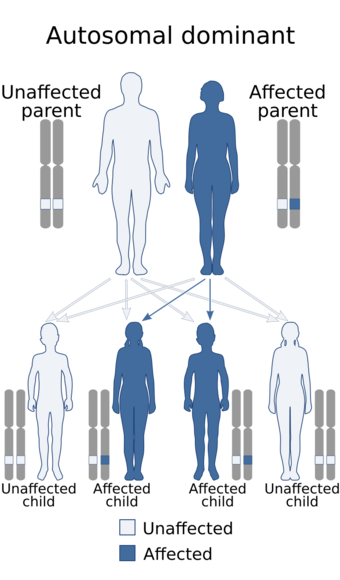Medicine:Menke-Hennekam syndrome
}}
| Menke-Hennekam syndrome | |
|---|---|
 | |
| Autosomal dominant pattern is the inheritance manner of this condition | |
| Specialty | Medical genetics |
| Causes | Mutations in the CREBBP gene |
Menke-Hennekam syndrome is a rare condition characterised by a constellation of lesions mostly involving the brain.
Signs and symptoms
The feature of this condition include
- Microcephaly
- Ventriculomegaly
- Absent corpus callosum
- Autistic behavior
- Feeding problems
- Epilepsy
- Variable intellectual disability
- Staphyloma
- Cochlear malformations
- Mild hearing impairment
- Exomphalos
- Short stature
- Recurrent upper airway infections
Genetics
This condition has been associated with mutations in the CREB binding protein gene (CREBBP). This gene is located on the short arm of chromosome 16 (16p13.3).
Pathopysiology
The pathogenesis of this condition is not understood.[citation needed]
Diagnosis
This syndrome may be suspected on clinical grounds. The diagnosis is established by sequencing the CREBBP gene.[citation needed]
Differential diagnosis
- Rubinstein-Taybi syndrome
Treatment
There is no specific treatment for this condition. Management is supportive.[citation needed]
Epidemiology
This condition is considered to be rare with less than 20 cases reported in the literature.[citation needed]
History
This condition was first described in 2019.[1]
References
- ↑ Banka S, Sayer R, Breen C, Barton S, Pavaine J, Sheppard SE, Bedoukian E, Skraban C, Cuddapah VA, Clayton-Smith J (2019) Genotype-phenotype specificity in Menke-Hennekam syndrome caused by missense variants in exon 30 or 31 of CREBBP. Am J Med Genet A
 |

